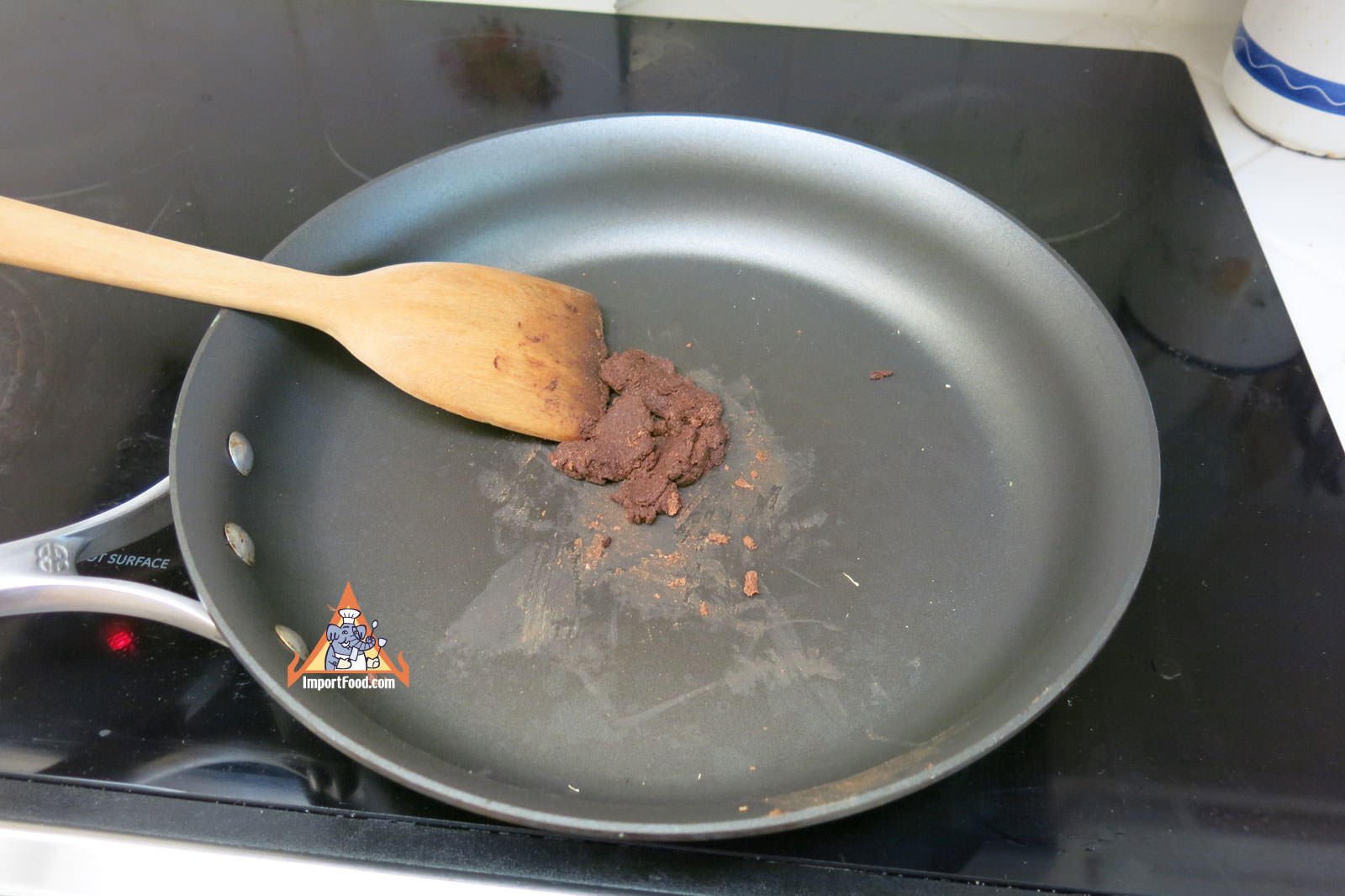
What’s the origin of shrimp paste?Īlthough it has been utilized as a vital component and culinary tradition in Southeast Asian cooking.Īmong those countries include South India, Sri Lanka, Vietnam, Thailand, Cambodia, Myanmar, and the Chinese province of Hainan, its origin is typically linked to island countries like Indonesia, Malaysia, and the Philippines.
#RECIPES WITH SHRIMP PASTE FREE#
Shrimp paste goes well with just about anything that can use a strong flavor kick, so feel free to experiment. Nam phrik kapi, a particularly popular dish made with fresh shrimp paste and most often eaten together with fried pla thu (short mackerel) and fried, steamed or raw vegetables. In Thailand, shrimp paste or shrimp sauce (kapi) is a key ingredient in many types of nam phrik, spicy dips or sauces, and in all Thai curry pastes. You can also add shrimp paste to soups or use it as an ingredient in dips for fish or vegetables. But you have to cook it first, of course. If you want, you can also eat it as a viand together with a bowl of steamed rice. However, that’s not the only use for this famous Filipino condiment, as it goes well with soup, boiled saba bananas, and cassava. Shrimp paste is often found in the pairing of green mangoes by street vendors in the Philippines, where the sweet and sour taste is complimented by the salty and spicy flavor of the sauteed shrimp paste.

#RECIPES WITH SHRIMP PASTE HOW TO#
(view more images) How to eat shrimp paste One of the most popular shrimp pastes is the Kung Thai brand that you can buy online: With those factors in mind, I trust you to be sure to know what to look for in the market. Shrimp paste is not a cheap ingredient, so you don’t want to overpay for it. Third, you want to make sure that the shrimp paste you’re buying is reasonably priced.This will give the shrimp paste a deeper flavor and also help preserve it. Second, you want to look for shrimp paste that is nicely fermented.This will ensure that the shrimp paste has a good flavor and aroma. First, you want to make sure that the fermented ground shrimp paste you’re buying is made with fresh shrimp or krill.When it comes to buying your shrimp paste, there are a few things you should look for to get the best possible product. Shrimp paste may be found in most Australian suburbs where Southeast Asians live. It’s also readily accessible in Suriname since the high number of Javanese people reside there. Other countries’ shrimp pastes are also available in Asian shops and online. Thai shrimp paste such as Kung Thai and Tra Chang are available in stores in the United States. Indonesian shrimp paste of the kind used for Oedang Trassie from Conimex is available at supermarkets selling Asian cuisine in the Netherlands. Shrimp paste is also sold in other countries, including the United Kingdom, where it may be found in specialty shops catering to Asians. Shrimp paste has a diverse range of smells, textures, and saltiness depending on the region. The best locations to buy top quality shrimp paste are marketplaces near villages where it’s produced. If you like spicy, you will LOVE this Hot and spicy Filipino Bicol Express recipe with shrimp paste Where to buy shrimp paste The level of spiciness will also vary depending on the type of shrimp paste you use. Some shrimp pastes can also be quite sweet, while others can be spicy.

Due to the salt content it is also quite salty and the fermentation gives it a umami flavor. Generally, shrimp paste has a pungent flavor with strong notes of seafood. Shrimp paste can vary greatly in taste depending on how it is made and what ingredients are used. Shrimp paste tastes aren’t as simple as you may think. The odor of high-grade shrimp paste is generally milder than that of other types. In the Philippines however, they are commonly bright red or pink due to angkak (red yeast rice) being used as a colouring agent. The colouring of shrimp paste also varies depending on the region it is produced in.įor example, shrimp paste made in Hong Kong and Vietnam usually has a light pinkish grey hue whereas the type used for Burmese, Lao, Cambodian, Thai and Indonesian dishes is darker brown. Shrimp paste can come in many different forms, from liquid sauces to solid blocks. It is a vital ingredient in many Asian cuisines, imparting a distinct umami flavor. Shrimp paste is a popular Southeast Asian condiment made from shrimp that has been fermented with salt. 15 The bottom line What is shrimp paste?.14.5 What does shrimp paste smell like?.14.1 What can I substitute for shrimp paste?.10.3 Helpful cooking tips for sauteing shrimp paste.9.4 Sauteed shrimp paste and steamed rice.



 0 kommentar(er)
0 kommentar(er)
